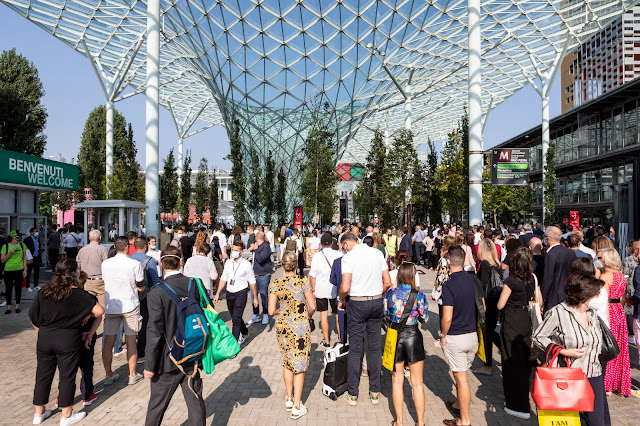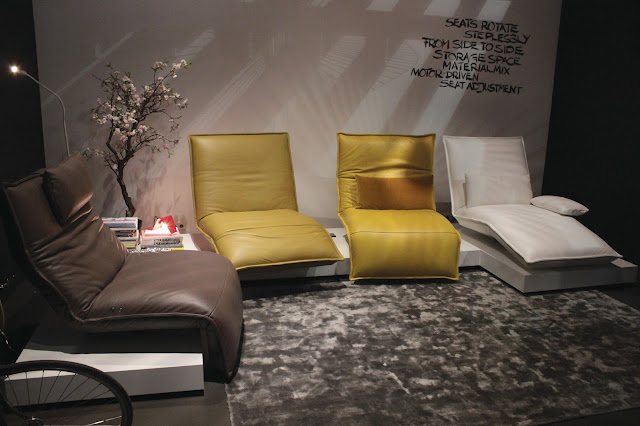Why I visit Milan Design Week - Secrets, relevance, and the joy of new design
I've been a curious, excited visitor to Milan Design Week since 2011, and every year thereon till the pandemic paused things. The first couple of years were nothing short of astonishing. Picture a hundred-odd football fields of furniture and interior concepts, all newly designed and produced in a span of 10 months. That's the real scale of the week, which has two sides. At the core is Salone del Mobile, or the Milan Furniture Fair, where the world's most innovative furniture makers vie for a place to display their latest, at great expense and effort.
Every booth of every brand in every hall at the Rho fairgrounds is designed to impress. And it hits you with such force, till perhaps around year six, when you have finally raised your expectations even before you walk in on day one. In the body language of many of the architects, designers and buyers from across the world, concern is easy to spot. Numerous new textures, finishes, patterns, materials, mechanisms. New cutting edge technology to experience. Thousands of sofas and chairs, wherever you turn. So which is the best? Which will endure to yield a new design trend? Which is ideal for a local market? A few years ago, I observed the spread of a trend in sofa mechanisms, from its birth at a Simply Sofas brand to almost every other major sofa-maker in the subsequent years. That was innovation at play, unfolding right before me. Today, that mechanism (which transforms a formal sofa to a relaxing, 'feet-up' one in a flash), is available everywhere, even in India. Needless to say, the design legacy of a brand is what true innovation is about, an assurance that there's someone with a crazy new vision of what Home should be, season after season. Spotting these shifts is perhaps what excites me most.
While the Fair is really why I travel to Milan, over the years I've come to love the other side, perhaps a tad more. Fuorisalone. Milan city coming to throbbing life with design exhibitions, workshops and installations, all finding space off cobbled streets, in stoic stone structures, open boulevards and quaint courtyards. Walking into what used to be someone's home is such an intimate act, even if the key focus is on an exquisite design you haven't seen before. That's part of the joy I experience, a discovery of Italian architecture - much of it centuries old, with ornate cornices, symbolic wall coverings, delicate woodwork, unexpected spatial design, and imposing wooden doors with brass handles. A lot of modern Italy reminds me of our own deep cultural preference for carvings, motifs, stone and wood. The habit the Italians have for preserving what is unique and precious, no matter how old and decrepit it may be, reveals a strong pride for a culture that respects diversity in design.
Design Week is dominated by Italians of course, being the biggest drivers of global furniture trends for decades, just like the labels Armani and Gucci in fashion. The Germans make a powerful show, the Spanish are flamboyant, the French are muted, and others experiment just as much. MDW usually happens a month after MFW (Milan Fashion Week), so the impact that fashion has on furniture and interiors is hard to miss. While beauty is the core of successful design innovation, functional brilliance often wins the day.
I end up staying in various hotels. The most interesting one was near La Scala, the famed opera house, built in 1778. During design week, they had a woman playing a harp in the lobby, surrounded by colourful pop art furniture set into an ambience of travertine stone. Step outside and there's a decision to be made; left goes to the Brera design district, right goes to Navigli which has the canal designed by Leonardo da Vinci. Whichever way you do, there's much to be seen, including designers. Girogio Armani at a table in a popular roadside restaurant, Zaha Hadid gliding down a hallway, a dapper David Chipperfield inaugurating an exhibit, Philippe Starck taking pictures with strangers. Yes, I've seen these. The best part of Milan is the food and drink though. The Campari bar at the Galleria Vittorio Emmanuelle, the world's first mall concept, enclosed by a glassed, cast iron ceiling, is where Francis Ford Coppola, Spileberg and the like have oft sat to observe people passing by. And you can feel the spirit of Leonardo walking into the square of the Duomo, the Palazzo Reale and the modern art museum, all right there. Little indulgences we must enjoy.
 |
| Simply Sofas meets the legendary product designer Philippe Starck at Milan Design Week 2019 (left), Zaha Hadid's Mew table (right) |
A note on the big trends. There are a few seminal, trend-defining moments to come out of Milan. Back in 2011, the effects of the 2008-9 recession were still evident. White became a trend colour, not because of the need to calm emotions, or to amplify simplicity and form, but because it was convenient and prudent for a whole industry to cut down on wastage and uncertainty. White laminates, white upholstery, white wood, white everything. Fashion followed. This year, the 60th edition of Salone, promises to be another watershed moment. I can't wait to see what the pandemic has brewed. A whole design and craft industry pushed to innovate - the anticipation is extraordinary. #SimplyMilan
About Author:
Nagesh Manay works with Simply Sofas and brands in international furniture design and interiors for close to 2 decades. He considers himself an interpreter of nuances, not like a trained architect or a home owner, but a literate lover of design.








Comments
Post a Comment